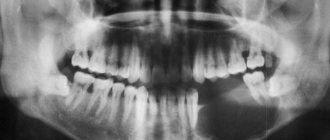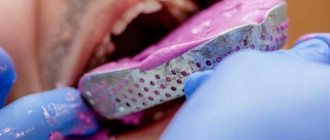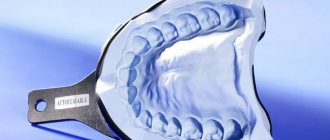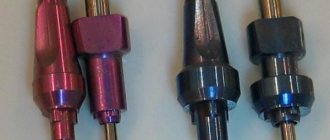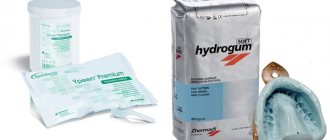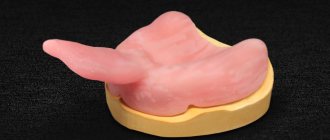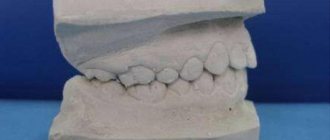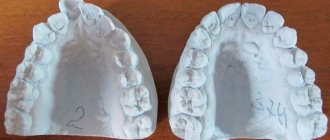How to replace silicones in natural cosmetics for hair and skin
You can replace silicones in your handmade cosmetics recipe with other useful actives, which you can buy in the Beurre store. Such components will not only provide an immediate cosmetic effect, but will also benefit your skin and hair.
In order to replace silicone in a recipe, it is necessary to understand for what purpose this silicone was introduced into the formulation: to improve the tactile properties of the cream, to facilitate emulsion with base oils, to distribute pigment, to create a “dry” oil, or to giving hair silkiness.
For example, silicones in hair recipes can be replaced with broccoli and crambe oils. Literally 1-2% of these oils in your shampoo or conditioner will give your hair shine and smoothness.
Broccoli oil
It is considered the least greasy oil due to the erucic acid in its composition. It does not weigh down the hair, makes it more manageable and makes combing easier. In creams, broccoli oil improves the glide and application of the product; due to its low fat content, this oil can be used in dry oil recipes for skin and hair. You can use pure broccoli oil as a treatment for the ends of your hair: take a few drops of the oil, rub it into your palms and then apply it to the bottom of damp hair.
Crambe butter
or Abyssinian mustard is also one of the lightest oils due to its fatty acid composition. They can replace silicones not only in hair recipes. Crambe oil is suitable for dissolving UV filters and provides good distribution of dry particles. Crambe oil is similar in terms of fatty acids to broccoli oil, one is much cheaper, and is often used in dry body oils, as well as massage mixtures.
You can replace dimethicone in hair products with the innovative active Sofcare
. It is a multifunctional conditioning ingredient of plant origin. It does not reduce hair volume (as silicones do), enhances its shine and improves hair manageability, and helps the hairstyle maintain its shape. At the same time, Sofkea enhances the strength of hair. It is evenly distributed throughout the hair, promotes better adhesion of the cuticle to the hair shaft, thereby improving the condition of brittle hair. And a bonus for everyone who cares about the planet - the component is biodegradable and does not harm the environment.
Volatile silicones, for example the popular cyclomethicone, are the main component of leave-in dry oils for skin and hair, and are also a frequent guest in cream formulations. Its task is to lighten oil mixtures, make them easily distributed over the body and hair, and quickly absorbed. In creams it improves tactile properties and makes them light and instantly absorbed. However, synthetic cyclomethicone can be replaced with natural analogues: emollients Gosulin IL
and
Cetiol RLF
. These are super light, volatile emollients with high spreadability. Both of them are able to lighten oil mixtures, reduce fat content, promote better distribution of the cosmetic product and improve tactile sensations. At the same time, these emollients really soften the skin and can even be used in children's cosmetics, because they are of plant origin.As for phenyl trimethicone, which is often used in recipes for lip products (lipsticks, glosses, balms) to give them shine, it can be replaced with the ceramide-like emollient Eldew
. This component significantly enhances the shine and radiance of decorative cosmetics, improves the overall impression after application, and also carefully cares for the skin of the lips.
We often use all these components to create recipes from the Beurre cosmetic kitchen. You can watch them on our youtube channel
, get inspired and create your own recipes. Use components thoughtfully, read their descriptions and do not chase an instant effect.
Silicone masses
Silicone masses appeared in dentistry in the 50s. Now they have entered their heyday, being the undisputed leaders among modern impression masses. Created on the basis of organosilicon polymers - silicone rubbers.
Most silicone impression materials are designed to produce double impressions {see rice. 3). Available in the form of two pastes - basic and catalyst. The liquid supplied with the base paste can also be used as a catalyst.
The consistency of the paste determines its clinical purpose after preparation (mixing):
— high-viscosity pastes (base and catalyst pastes or base paste and catalyst liquid) are used independently or as the first, base layer in double prints;
— pastes of medium viscosity (basic and catalyst pastes) are used to obtain functional impressions or for the restoration of removable dentures;
— low viscosity pastes (base and catalyst pastes or base paste and catalyst liquid) are used as a second or corrective layer in double impressions.
To prepare the mixture, catalyst liquid or paste is added to the required amount of base paste, measured using a paper dosage scale placed under a glass plate (Fig. 6). They are mixed using a plastic spatula until a uniform consistency or color is obtained. A paste of dense consistency (high viscosity) is collected with special measuring cups and, after adding a catalyst liquid, mixed by hand. Mixing time is 30-45 s. Some silicone masses harden after 2.5-4 minutes, others after 5-8 minutes.
An impression tray with perforations is edged with adhesive tape, as when using alginate masses, or covered with adhesive.
More often, obtaining a double impression is carried out in two stages. At the first stage, a basic dense paste mixed with a catalyst is applied to an impression tray lubricated with adhesive and an impression is taken. In this case, in order to create space for the corrective paste, the procedure is carried out before preparing the teeth, either without removing the temporary crowns, or by first covering the impression material with a strip of thin polyethylene film.
Then, after preparation, a pharmaco-mechanical expansion of the gingival groove (pocket) of the supporting teeth is carried out, a linen or cotton thread or a knitted ring soaked in vasoconstrictor solutions is introduced there.
The first layer of the impression personalizes the standard tray with which it was produced. On it, a layer of paste is cut off on the roof of the palate and along the edges of the impression for its free reintroduction into the oral cavity. In addition, the interdental septa are removed to prevent compression of the interdental papillae. Finally, the outlet grooves are engraved from the tooth impressions to the top of the palatine vault, radially, to prevent elastic deformation of the impression.
Then the first layer of the print is dried and filled with clarifying paste. The threads are removed from the pockets, and the pockets themselves are dried with a stream of warm air. They can be filled with corrective paste using a special syringe with a curved cannula.
You can take an impression without using a syringe by filling the impression with clarifying paste and reintroducing it into the oral cavity.
There is a one-step method for obtaining a two-layer print. At the same time, having filled the spoon with the main paste, the doctor makes indentations in it in the area of the projection of the supporting teeth. Corrective paste is injected there. It is applied from a syringe to the prepared teeth. After this, a spoon with two pastes is inserted into the oral cavity to take an impression.
Consequently, when obtaining a double impression, basic pastes with high viscosity and corrective pastes with low viscosity are used. A paste of medium viscosity is used to obtain functional impressions from toothless jaws. To do this, after mixing with the catalyst, the paste is applied in a thin, uniform layer to the inner surface of an individual spoon. The spoon with the mass is pressed to the jaw and the edges of the impression are formed using functional tests.
Thus, silicone materials are used for dental defects, partial and complete loss of teeth. Their main purpose is to obtain double impressions for combined crowns, veneers and inlays, allowing the cavities or subgingival ledge prepared on the supporting teeth to shine through. In addition, they are used to obtain functional impressions, as well as for relining dentures, in volumetric modeling of the bases of complete removable dentures.
The silicone materials used differ in the mechanism of the polymerization reaction.
♦ Polymerization is a chemical reaction in which two or more molecules of the same substance produce a compound that has the same composition but a higher molecular weight. In other words, it is the process of converting monomers into polymers.
Two types of polymerization are known: polyaddition and polycondensation. In the first reaction, no by-products are formed and the elemental composition of the monomer and polymer is the same.
On this basis, this group of materials includes vinyl polysiloxane materials, the polymerization rate of which is directly dependent on temperature - the higher the temperature, the higher the polymerization rate. Vinylpolysiloxane materials are the most dimensionally stable of all materials currently existing in the world.
In the second case, by-products are formed (usually water, less often ammonia, alcohols), and therefore the elemental composition of the monomer and polymer is different.
The main paste of materials polymerized by the type of polycondensation consists of silicone with a relatively low molecular weight - dimethylsiloxane, which has reactive terminal hydroxyl groups. Fillers can be copper carbonate or silica. The catalyst is either a liquid consisting of a suspension of stannous octoate and alkyl silicate, or a paste with the addition of a thickening agent. The reaction proceeds with the formation of rubber with a three-dimensional structure and the release of ethyl alcohol.
A type of silicone material that polymerizes by polyaddition type is represented by pastes of low, medium, high viscosity and is also polysiloxane. The main paste consists of a polymer with moderately low molecular weight and silane groups, as well as a filler (diatomaceous earth, white carbon). The catalyst paste is represented by a polymer with a moderately low molecular weight and vinyl end groups, as well as a catalyst - chloroplatinic acid. The polyaddition reaction does not create low molecular weight products.
It should be remembered that when mixing two pastes with hands wearing rubber (latex) gloves, sulfur from them can enter the silicone material and reduce the activity of the platinum-containing catalyst. The result of this is a slow or complete absence of hardening of the paste. Therefore, it is necessary to wet the gloves with water or a weak solution of a disinfectant. Vinyl gloves do not have these side effects of latex gloves.
In our country, impression materials Sielast-69 are widely known; -03; -05; -21 (Ukraine). Its latest modification was developed at the Research Institute of Synthetic Rubbers (St. Petersburg). On its basis, a material was created based on filled vinyl silicone rubber, curing without the release of by-products - Vigalen-30 and the corrective material Vigalen-35. The impression mass Sillit was also developed in St. Petersburg, and Erlosil in Moscow.
Vigalen-30 is a highly viscous impression material for obtaining double impressions. It is used with medium-viscosity material Vigalen-35 for prosthetics with partial and complete removable plate dentures, as well as solid-cast, metal-ceramic, metal-plastic bridges and single crowns, inlays, arched (clasp), splinting solid dentures, in the manufacture of orthodontic appliances.
In addition, the material allows restoration of the base of removable dentures using the laboratory method. To mix the material, take equal ratios of the main and catalyst paste. Mixing continues for 30 s until a homogeneous mass is obtained. Hardening time in the oral cavity is 4-5 minutes.
The low density of the material reduces its consumption per impression, which can be used to obtain several high-precision jaw models. Before obtaining the model, it is advisable to place the print in a soapy solution for 3-5 minutes and then rinse with running water. This non-shrinking material makes it possible to store prints for a long time (up to 2-4 weeks).
Vigalen-35 is a corrective silicone material of medium viscosity for obtaining double impressions in case of partial loss of teeth, periodontal diseases with high tooth mobility, and for prosthetics with bridges of any type.
The material can be used not only with domestic impression compounds Vigalen-30 and Sielast-21, but also with imported analogues that cure due to the polyaddition reaction and have minimal shrinkage. To obtain an impression, equal volumes of the main and catalyst pastes are mixed for 30 seconds to obtain a homogeneous mixture with a minimum working time of 5-6.5 minutes. Using a custom tray, you can obtain an accurate functional impression. The hardening time of the material in the oral cavity is 4-5 minutes.
When receiving a corrective impression, the mixed homogeneous mass is applied to the surface of the main impression, previously dried with a stream of dry air, and reintroduced into the oral cavity. The material is not recommended for use in combination with polycondensation-type siloxane masses or polysulfide impression materials.
Erlosil - a two-component impression material containing pastes of high, medium and low viscosity, is a vinyl siloxane rubber designed for obtaining accurate impressions of dentition, including double ones.
The material has the following technical characteristics: working time from the start of mixing is 5.5-7.5 minutes, hardening time in the oral cavity is 4-5 minutes; compression deformation 2-15%. Linear shrinkage of the material in 24 hours is 90.2%. Mixing the material for the impression (in equal proportions of pastes) is carried out with a spatula or fingers until a uniform color tone is obtained within 30 seconds.
From components (France), our country has been producing high-viscosity dental impression material Silboplast-V and low-viscosity Silboplast-N since 1997, which is a two-component (main and catalyst paste) silicone elastomer that hardens at room temperature as a result of a polyaddition reaction.
The material Silboplast-V is intended for obtaining a main print, which, in combination with the low-viscosity material Silboplast-N, makes it possible to obtain double prints. It is used for prosthetics with solid-cast, metal-ceramic, metal-plastic bridges, partial and complete removable plate and arch (clasp) dentures, and in the production of orthodontic appliances.
Silboplast-N is a low-viscosity material for producing double impressions. It is also used for functional impressions in cases of complete absence of teeth. The method of using the materials is quite simple: using measuring spoons, equal volumes of the base and catalyst pastes are thoroughly mixed for 30 s, and then an impression is taken. The working time is 5-6 minutes, hardening in the oral cavity lasts 3-4 minutes. Before making a plaster model, it is advisable to place the impression in a soap solution for 3-5 minutes and then rinse with running water. Before filling with plaster, the impression must be air dried.
One of the best representatives of silicone impression materials is the Japanese Exaflex, which contains 2 main pastes (yellow and blue). Mixing them ends when the material is uniformly green in color. There are also 2 pastes for creating a corrective layer, and 2 more pastes for obtaining functional impressions. In addition, the kit includes adhesive glue, retarder, spatulas, and a syringe. The same mass, packaged in double cartridges for use in a dispenser pistol with mixing tips, is called Examix. Also known are sets of silicone pastes Koltex/Koltoflex-lex (Switzerland) for multi-purpose purposes, Dentaflex (Czech Republic), Kneton/Sitran and Tsafo-Tevezil (Germany), Condensyl and Perfectxil (France), Silbon (Italy), Zetaplus, Orenvosh, Tixoflex.
(Yugoslavia) a group of condensation silicone materials Galesil is produced:
— Galesil-P KIT — high viscosity;
— Galesil-X green — medium viscosity;
— Galesil-L blue — low viscosity;
— Galesil activator paste is a universal catalyst for
polycondensation silicone materials.
Tasteless and odorless materials Accuflex and Accumix, supplied (USA), have high accuracy and stability in solutions for cold sterilization. They have varying degrees of viscosity depending on their purpose.
The hydrophilic structure of the Aquasil material (USA) combines a cross-linked polymer network with an incorporated surfactant. The polymer network provides high tensile strength, and the included surfactant makes wetting properties equal to polyester materials.
This unique modified vinyl siloxane chemical structure provides high precision detail in wet environments that cannot be achieved using traditional impression materials.
Reprosil-NF is a chemically cured silicone impression material (USA) for obtaining double impressions. The material consists of two separate components of different consistency. The high-viscosity mass has good elasticity and does not make it difficult to remove from undercuts. Serves for edging individual trays, obtaining a preliminary imprint in a double impression, as well as recording the central relationship of the jaws.
Due to its hydrophilicity, the low-viscosity mass allows you to obtain accurate impressions from wet surfaces. It is applied with a syringe and is corrective in a double impression. In addition, the material can be used to obtain functional impressions when restoring the base of a removable lamellar prosthesis. Before taking an impression, it is recommended to apply a thin layer of Silfix adhesive to the individual tray. After 3 minutes, you can begin to take an impression using a spoon prepared in this way.
To disinfect impressions from Reprosil-NF, standard disinfectants, Sporicidin aerosol or Sporicidin sterilizing composition in a dilution of 1:16 are used.
The impression can be stored for up to 7 days, but nevertheless, a plaster model is obtained no earlier than 1 hour after its removal from the oral cavity. The impression must first be washed and dried. Prints made from Reprosil-NF can be coated with copper or silver. Before galvanizing, a clean, dry print should be evenly coated with colloidal silver or graphite.
(Germany) proposed the material Contrast, which, due to its hydrophilic properties, gives high quality impressions, despite the humidity of the oral cavity. Has good elasticity. The two-component base material is used for a preliminary impression followed by its correction with a second layer, as well as for shaping the edges of individual impression trays. The kit also includes a medium-viscosity corrective paste in a cartridge package. It can be used both in double impressions and to obtain functional impressions in case of partial or complete loss of teeth.
Registrado - a silicone-based material of a transparent blue color - is produced (Germany) in cartridge packaging. Used to take impressions and to record the central relationship of the jaws.
The group of impression materials Panasit (Germany) has been replenished with polysiloxane material of low and medium viscosity in syringes. It hardens within 4 minutes in the oral cavity and is characterized by a smooth surface and clear relief. The pastes are mixed in equal proportions. They are designed to produce double as well as functional impressions.
(Germany) produces silicone impression material Detasil, which guarantees the receipt of several plaster models with one impression. The set of this impression material includes:
— Detazil-K — two high-viscosity pastes;
— Detazil-E — two pastes of medium viscosity, produced in tubes. Used for functional impressions with partial or complete loss of teeth;
- Detazil-L - low viscosity pastes, produced in tubes and are corrective. The material is mixed in a double cartridge with a mixing jet.
Silaplast also produces silicone impression material (base paste and catalyst liquid), used as the first layer of a double impression.
For the corrective layer, the material Silasoft is used, which, along with good fluidity and accurate reproduction of the details of the tissues of the prosthetic bed, has high volumetric stability and tensile strength. Silasoft is available in tubes (Silasoft normal) and in cartridge packaging (Silasoft special).
Vinylpolysiloxane material ZM Express restores volume after deformation when removing the impression from the oral cavity by 99.84%. For comparison: the same figure for polysulfide impression compounds is 99.7%, for polyester – 99.6%, and for polycondensation silicone materials – 99.34%.
The priority of using automatic mixing of two pastes using a syringe gun, two cartridges and a nozzle with a mixing spiral belongs to (USA), which produces silicone impression mass ZM Express.
For mixing viscous impression materials of the President type, produced in cartridges, (USA) a Quadro tip was proposed, the use of which, in addition to saving material by 22%, reduces stress and fatigue of the hands when working with it. In addition, by supplying more impression material, filling the impression tray is carried out much faster.
Medstar AV is an impression compound (Great Britain) based on vinyl polysiloxane, intended for obtaining double impressions when using metal-ceramic prosthetics.
The material is hydrophilic, easily mixed and does not stick to the instrument. Available in two types - normal and soft. The latter is especially suitable for use in periodontal diseases.
The mixing time for the base material is 45 s, for the corrective material - 45 s. The hardening time of the base and corrective materials is 3.5 minutes. Compression shrinkage of the mass is within 0.3-0.5%. Shrinkage after 24 hours does not exceed 0.1%. A plaster model is obtained 30 minutes after the impression is removed from the oral cavity, and several jaw models can be cast from one impression.
Kerr Extrud is a silicone material (USA), has 3 degrees of viscosity - high, medium and low (medium and low viscosity pastes are supplied in cartridges). The material does not shrink, is tear-resistant and has hydrophilic properties, which makes it possible to obtain an accurate impression from wet tissues of the prosthetic bed. The model is obtained 20 minutes after the impression is removed from the oral cavity.
Physico-mechanical properties of silicone materials. It is known that their shrinkage is small. It begins from the moment the base paste is mixed with the catalyst and crosslinking agent and is due to the vulcanization process of polymethylsiloxane.
However, initial shrinkage is not important since the material is in close contact with the hard tissues in the mouth and is contained in the impression tray. It will affect itself after the impression is removed from the oral cavity. During this period, shrinkage is determined by the completion of the polymethylsiloxane vulcanization process, as well as by cooling the print to room temperature. The coefficient of thermal expansion (CTE) of silicone impression materials in the temperature range 22-37 ° C is equal to 220 x 1SG6 "C"1 (for comparison of CTE of other materials, see Table 86).
Resident paste (Germany) a day after receiving the impression has small volumetric changes equal to 0.14-0.60%. Vinylsiloxane impression material Hydrosil (USA) hardens in 5-5.5 minutes, has a residual deformation of 0.2-0.5%, relative compression of 2-2.5%, detail reproduction of 22 microns, fluidity of 0-0.1%. Another vinyl siloxane material intended for occlusal impressions, Regisil (USA), hardens quickly (2-3 minutes), has a shrinkage of 0.2%, and a relative compression of 1.3%.
German silicone impression materials are the most widely represented on the domestic market. Among them are Optosil II, Xanthoprene, DL-Knet, Panasil, Formasil II, Alfasil, Tammasil, Deguflex. Rule, Memosil, Speedex, Rapid, President, Weisilex, Coltex, Coltoflex, Preshe Spot indicator, Imprint, Extrud, Unosil-S, Reprosil-HF, etc.
Silicone material such as Dimension is supplied (Germany) in various packaging:
— in cartridges of 48 ml for the manual mixer Garant (Dimension Byte - a high-viscosity material for recording occlusal relationships; Dimension Garant L - corrective mass for two-layer impressions);
- in cartridge packaging (main paste - 300 ml, catalyst paste - 66 ml) for the Pentamix mixer:
Dimension
Penta X is a high viscosity paste, Dimension Penta X Quick is a high viscosity paste and Dimension Penta L is a low viscosity paste.
Solutions of various substances are used to disinfect silicone impressions.
Silicone impression materials allow you to accurately display the relief of the prosthetic bed (including in a functioning state), have low shrinkage and residual deformation, a choice of varying degrees of viscosity, are easily separated from the model and are durable. Their only drawback is poor adhesion to the spoon.

